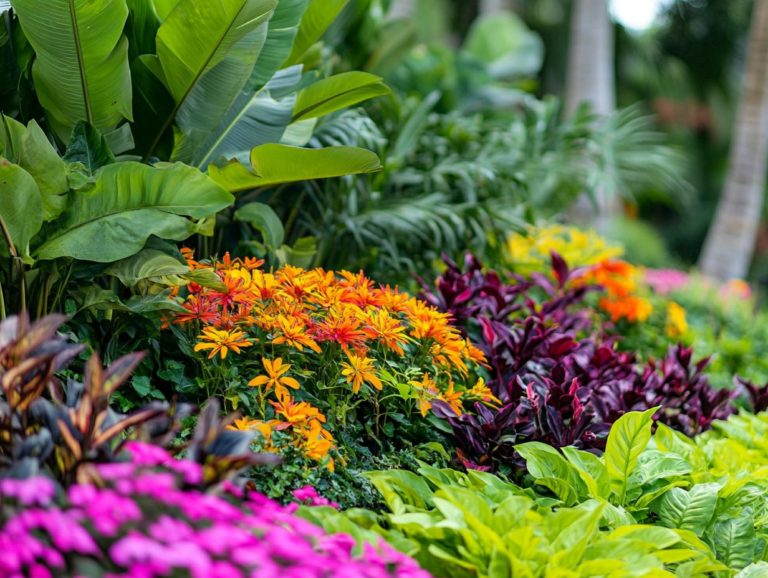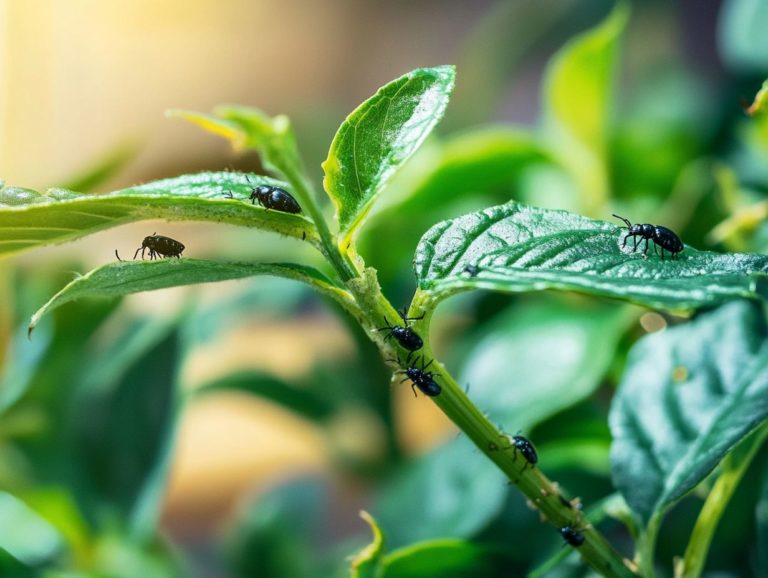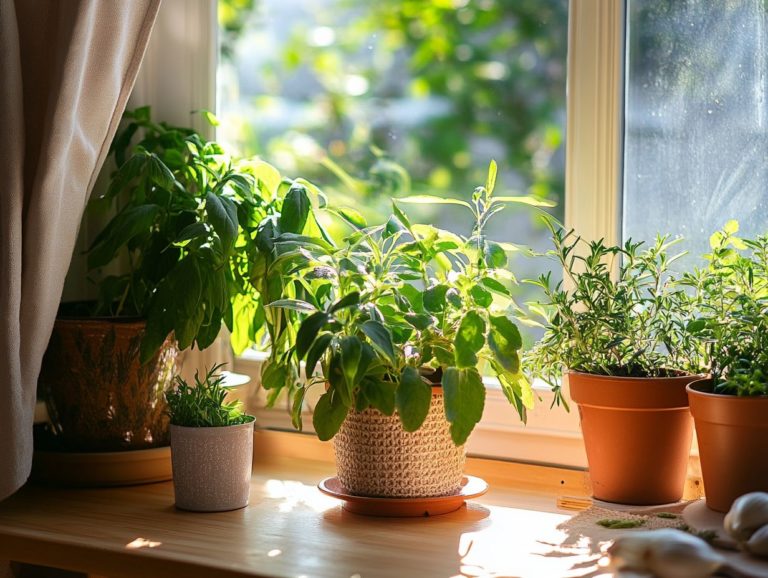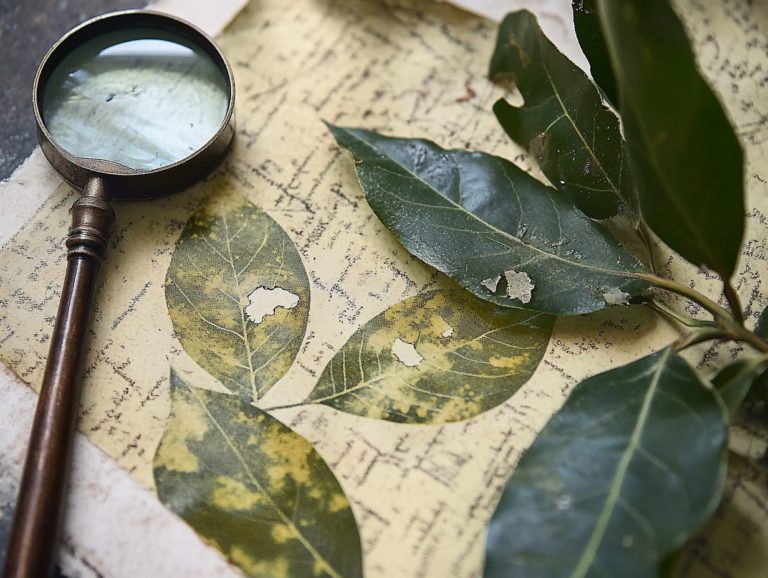How to Use Diatomaceous Earth for Plants
Diatomaceous earth is an extraordinary natural substance that presents a wealth of benefits for those passionate about plants and gardening. You will also discover surprising alternative uses that extend beyond gardening.
Comprising fossilized algae, this versatile material elevates soil quality and fosters plant health in multiple ways. You will delve into what diatomaceous earth is, learn how to apply it effectively, and understand the necessary precautions to consider.
Get ready to elevate your gardening experience! Diatomaceous earth is here to transform your plants like never before.
Contents
- Key Takeaways:
- What is Diatomaceous Earth?
- Benefits of Diatomaceous Earth for Plants
- How to Apply Diatomaceous Earth to Plants
- Precautions and Safety Measures
- Alternative Uses for Diatomaceous Earth
- Frequently Asked Questions
- What is diatomaceous earth and how does it benefit plants?
- How do I apply diatomaceous earth to my plants?
- Is diatomaceous earth safe for my plants and the environment?
- How often should I use diatomaceous earth on my plants?
- Can I use diatomaceous earth for all types of plants?
- How long does diatomaceous earth last in the soil?
Key Takeaways:

- Diatomaceous earth is a natural and effective way to improve soil quality and promote plant health, making it a valuable tool for gardening and farming.
- When applying diatomaceous earth to plants, it is important to follow proper techniques and safety precautions to protect yourself and your plants from potential harm.
- In addition to its use in gardening, diatomaceous earth has a variety of alternative uses such as in household and personal care applications, making it a versatile and useful product to have on hand.
What is Diatomaceous Earth?
Diatomaceous earth (DE) is a remarkable, non-toxic substance derived from fossilized remains of tiny aquatic organisms called diatoms. These organisms are abundant in silica.
This extraordinary material has garnered attention for its myriad applications, especially in natural pest control and household uses. With its composition predominantly featuring a safe form of silica, DE stands out as a safe alternative to conventional pesticides.
Embracing this eco-friendly option allows you to adopt a sustainable approach to pest management, enhancing the well-being of both your home and garden.
Definition and Composition
Diatomaceous earth is primarily made up of the skeletal remains of diatoms. These tiny unicellular algae are rich in silica, making it an incredibly versatile and effective treatment for a range of applications.
These microscopic organisms flourish in aquatic environments, and over millions of years, their accumulation has resulted in this fascinating sedimentary rock. The cell wall of each diatom is called a frustule and consists mostly of a safe form of silica that is non-toxic.
While the safe form is generally regarded as non-toxic and safe for various uses spanning from pest control to filtration crystalline silica raises potential safety concerns. Prolonged exposure to crystalline silica dust can lead to respiratory issues, highlighting the need for protective measures when handling diatomaceous earth in its raw state.
By understanding these components, you can optimize the benefits of diatomaceous earth while ensuring your safety.
Benefits of Diatomaceous Earth for Plants
Diatomaceous earth (DE) presents an array of advantages for your plants, including the enhancement of soil quality, improved moisture retention, and an effective, natural pest control solution. It stands as a vital component for any home garden or agricultural endeavor.
Its distinctive structure not only aids in retaining moisture within the soil but also fosters robust plant growth by eradicating harmful pests without resorting to synthetic chemicals. Embracing DE can transform your gardening experience into one that is both fruitful and eco-friendly.
Improving Soil Quality and Plant Health
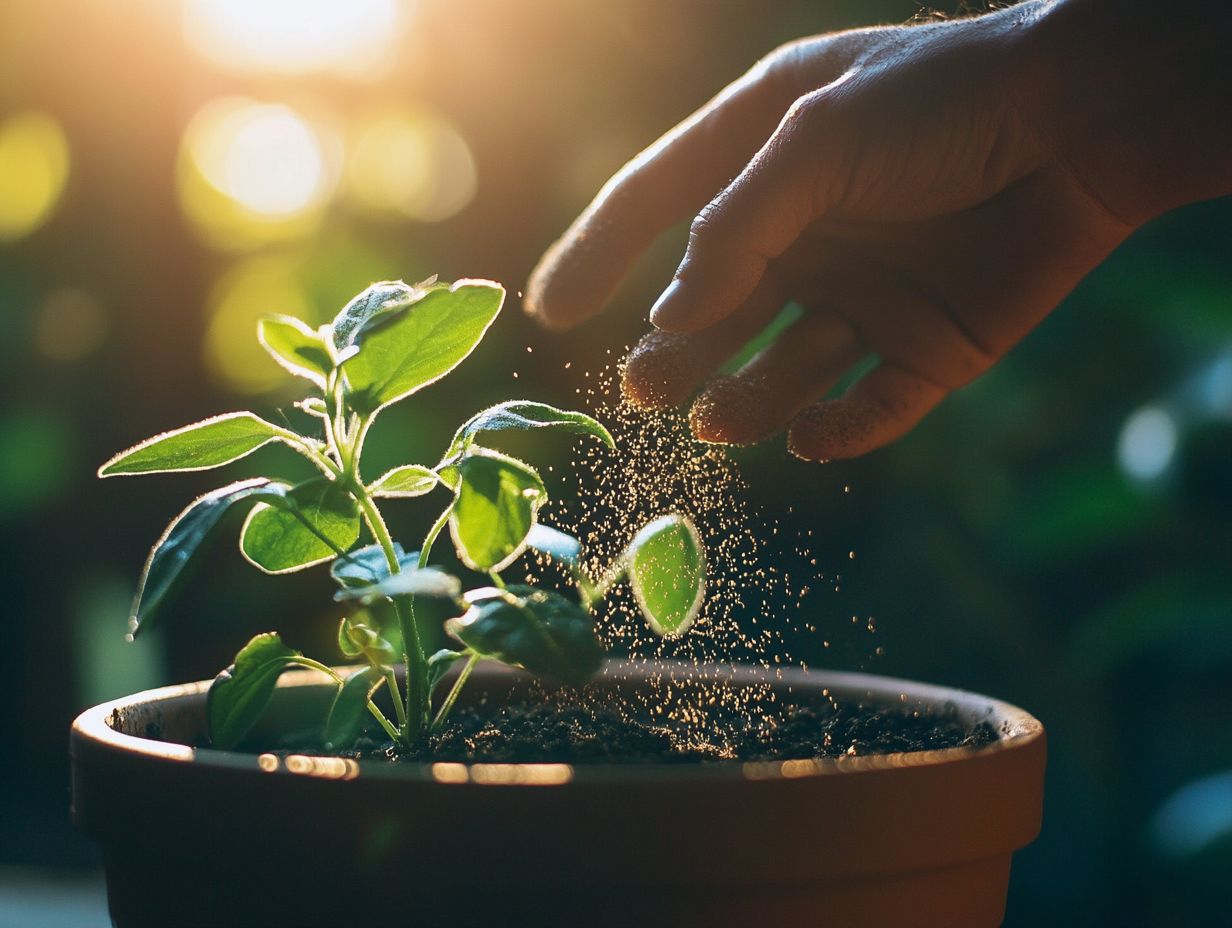
By incorporating diatomaceous earth into your garden, you can dramatically enhance soil quality and boost plant health, thanks to its impressive moisture absorption capabilities and nutrient provision. This natural wonder helps maintain optimal moisture levels and promotes superior soil structure and aeration.
As it integrates into the soil, it significantly improves its capacity to hold nutrients, which is essential for the thriving of various plants. Diatomaceous earth creates a porous environment that fosters healthy microbial activity, enriching the soil even further.
When used correctly, it can lead to a remarkable increase in your garden’s overall productivity, giving your plants the power to flourish with vigor.
How to Apply Diatomaceous Earth to Plants
Applying diatomaceous earth (DE) to your plants can be approached in several ways. Each method is tailored to your unique needs, whether you’re targeting pests or aiming to improve soil quality.
It’s crucial to select the right application techniques to fully harness its benefits. This ensures you safeguard sensitive plants and beneficial insects.
Methods and Techniques for Application
You have several effective methods for applying diatomaceous earth. This ensures you get the best results in both pest control and soil enhancement.
You can choose a dry application or mix it with water to create a slurry (a mixture of DE and water), each tailored to specific needs.
The dry application method is particularly effective for treating areas with crawling insects. This allows the powder to cling to their bodies and promote dehydration, leading to their elimination.
On the other hand, a slurry is ideal for enriching soil. This method helps the diatomaceous earth dissolve uniformly, making it easier for plants to absorb its benefits.
Regardless of the method you choose, act now to protect yourself and your plants! Following safety precautions is essential. Wearing a mask and gloves, along with adhering to product labels for proper usage guidelines, maximizes your effectiveness while minimizing exposure risks.
Precautions and Safety Measures
While diatomaceous earth is a natural and non-toxic substance, you must take certain precautions to ensure the safety of yourself and your plants.
Being mindful of irritation risks and specific health considerations will allow you to use DE effectively. This protects sensitive plants, pets, and beneficial insects from any unintended harm.
Protecting Yourself and Your Plants
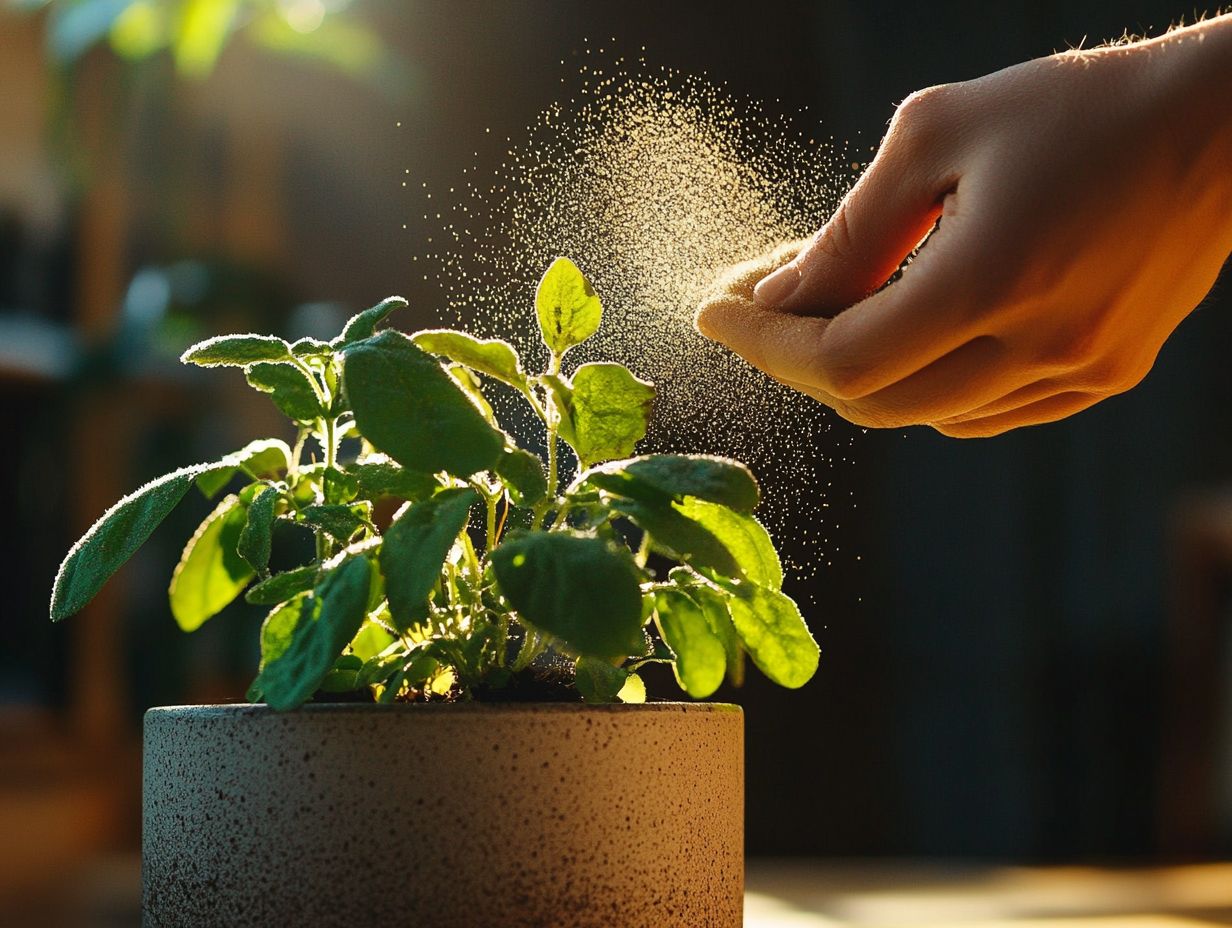
To safeguard both yourself and your plants, follow some essential safety measures. Wearing gloves and masks during application minimizes the risk of irritation.
It s equally important to keep pets and children at a safe distance from the treated area until the dust settles and any excess is cleaned up. Ingesting diatomaceous earth can lead to health concerns, so caution is key. Explain the product’s purpose to older children to foster understanding and responsibility.
When applying diatomaceous earth indoors, consider using a fine applicator. This helps control the spread and reduces the risk of inhalation. Enhancing ventilation by opening windows can further lower the likelihood of respiratory irritation.
Lastly, consulting professionals for safe handling guidelines can bolster your protection efforts, ensuring a safe environment for everyone involved.
Alternative Uses for Diatomaceous Earth
Diatomaceous earth (DE) transcends mere garden use; it offers a wealth of alternative applications in household and personal care realms. This highlights its remarkable versatility as a natural remedy for pest control and hygiene.
Whether it’s absorbing excess moisture or functioning as an effective abrasive, DE proves to be a multipurpose ally in your daily life, all without the presence of harmful additives.
Start using diatomaceous earth responsibly today to take advantage of its many benefits!
Household and Personal Care Applications
Diatomaceous earth is a versatile ally in household and personal care. It serves many purposes: a natural insect deterrent, a moisture absorber, and an ingredient in beauty products for gentle exfoliation.
This remarkable powder, born from fossilized aquatic organisms, is gaining traction as a preferred choice over synthetic options, thanks to its non-toxic nature and versatility. Picture this: you sprinkle it in your garden beds or around your home, creating a natural barrier against pesky pests like ants and roaches.
Mix it with baking soda to create a natural deodorizer for carpets and shoes, effortlessly neutralizing odors without resorting to harsh chemicals.
In the realm of skincare, its fine texture makes it perfect for gentle exfoliation, promoting smoother skin without the irritation that often accompanies synthetic alternatives.
By incorporating this multipurpose powder into your daily routines, you can elevate your home environment and self-care experience!
Frequently Asked Questions
Here are some common questions about diatomaceous earth and its benefits.
What is diatomaceous earth and how does it benefit plants?
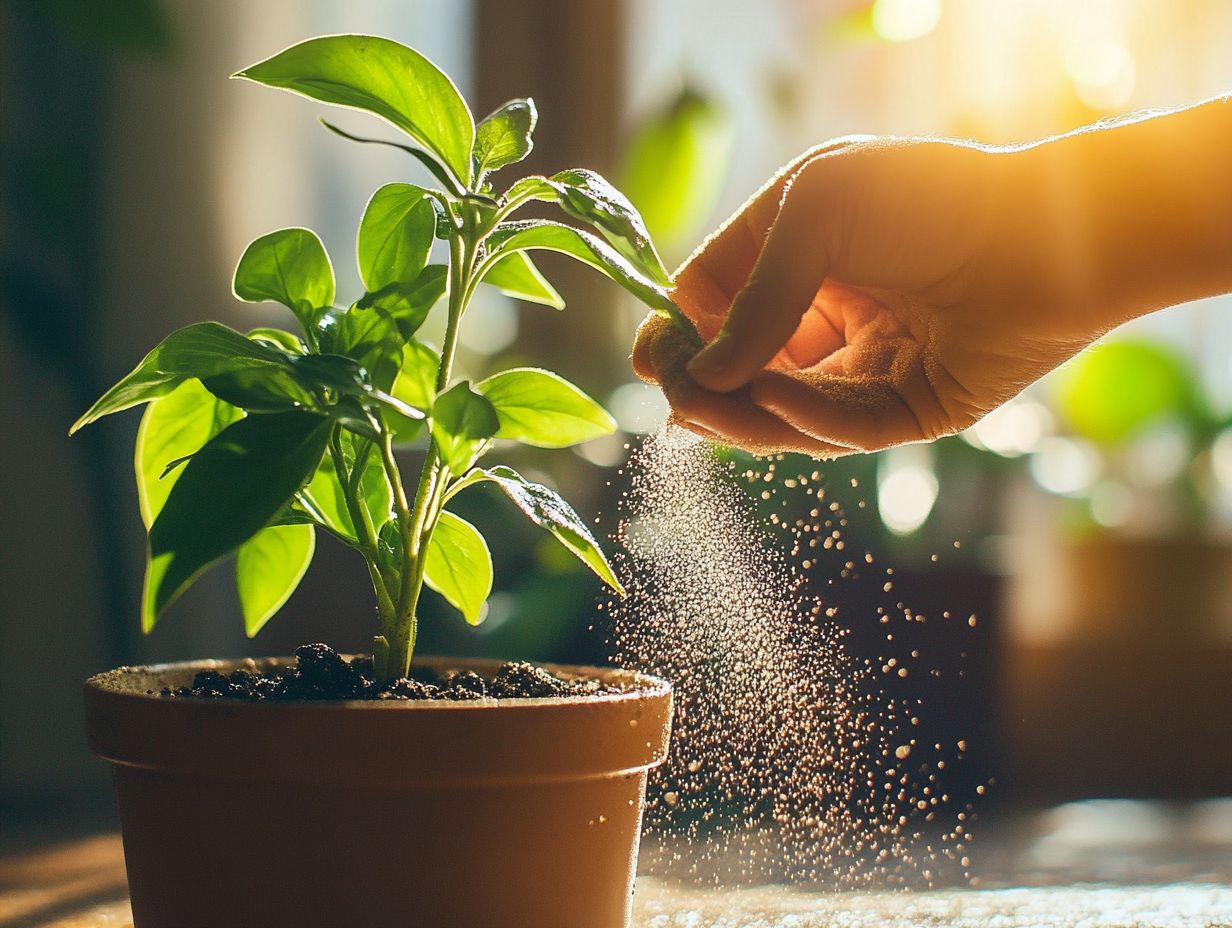
Diatomaceous earth is a naturally occurring, soft sedimentary rock that is made up of fossilized diatoms. It is rich in minerals and has a porous structure, making it a great natural fertilizer for plants. It helps improve soil drainage and aeration, promotes root growth, and protects plants from pests and diseases.
How do I apply diatomaceous earth to my plants?
There are a few different ways to apply diatomaceous earth to your plants, depending on your needs. For general use, sprinkle it on the soil around your plants and water it in.
If you are using it for pest control, dust it on the leaves and stems of your plants. You can also mix it with water and use it as a foliar spray.
Is diatomaceous earth safe for my plants and the environment?
Yes, diatomaceous earth is safe for both plants and the environment. It is a natural and organic material that does not contain any harmful chemicals. However, it is important to use food-grade diatomaceous earth for edible plants and to avoid inhaling large amounts of it.
How often should I use diatomaceous earth on my plants?
The frequency of diatomaceous earth application depends on your specific plants and their needs. As a general rule, it is safe to use it every 1-2 weeks for regular maintenance.
If you are using it for pest control, you may need to apply it more frequently until the infestation is under control.
Can I use diatomaceous earth for all types of plants?
Yes, diatomaceous earth can be used on all types of plants, including vegetables, flowers, trees, and shrubs. It is especially beneficial for plants that are prone to pests or have heavy clay soils that need improved drainage.
How long does diatomaceous earth last in the soil?
Diatomaceous earth can remain effective in the soil for a long period, up to several years. However, its effectiveness may diminish over time due to rain or watering, so it is recommended to reapply it every 1-2 years for optimal results.
When using diatomaceous earth powder, consider its moisture absorption properties and adjust your application accordingly.
Try incorporating diatomaceous earth into your routine today for a healthier home and garden!


